All products featured are independently chosen by us. However, SoundGuys may receive a commission on orders placed through its retail links. See our ethics statement.
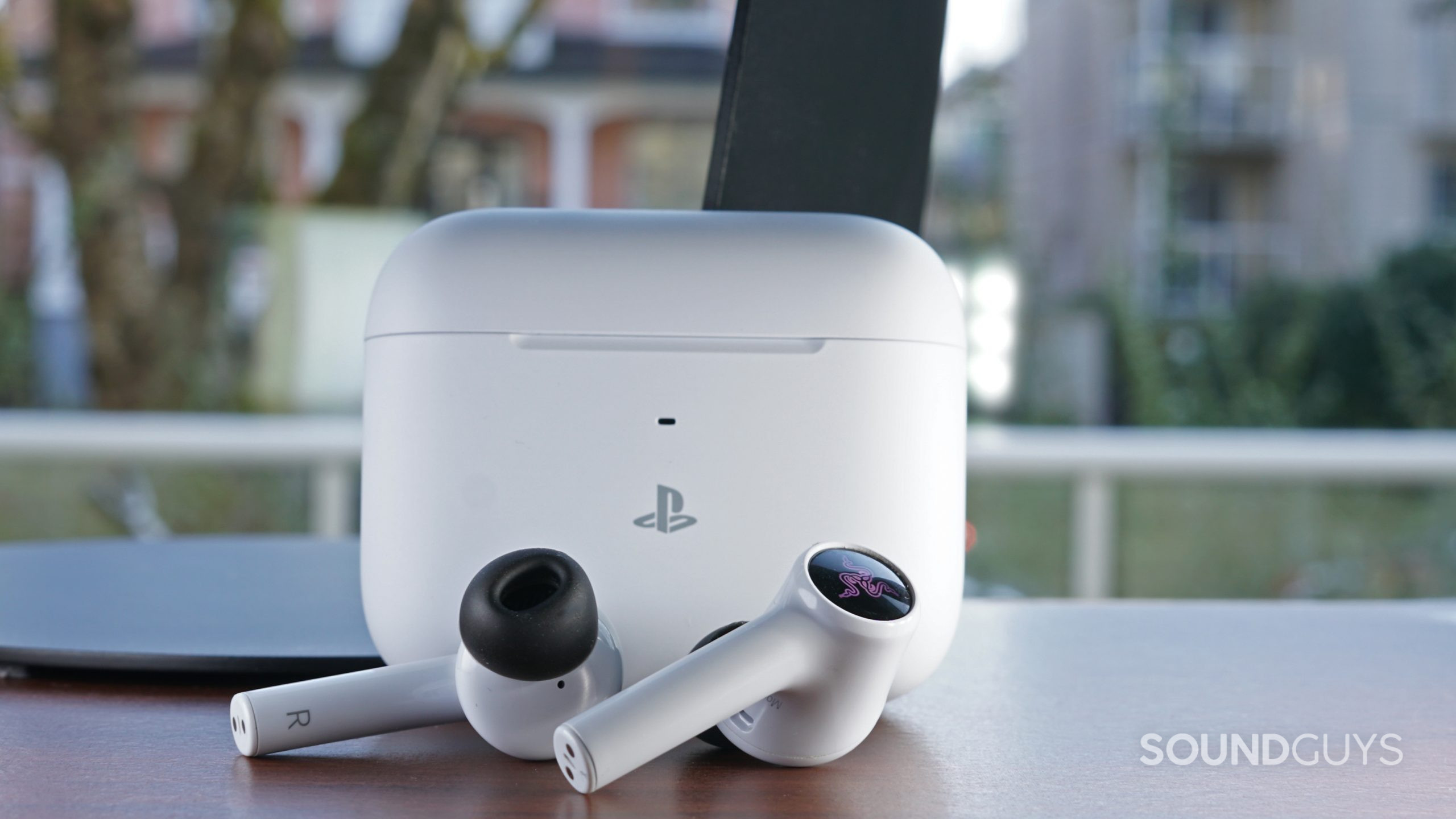
Razer Hammerhead Hyperspeed review
Published onMarch 29, 2023
Razer Hammerhead Hyperspeed
The Razer Hammerhead is one of the company’s longest running lifestyle audio product lines, encompassing wired and true wireless earbuds for your mobile needs. Now it’s trying to move its lifestyle designs back to the gaming space—evident from the similarities between the Razer Opus and Barracuda—and the Razer Hammerhead Hyperspeed is its true wireless solution.
Is a USB dongle enough to make these earbuds worth buying?
Editor’s note: this is the first version of the article. Updates will follow as the market changes.
The Razer Hammerhead Hyperspeed could be an attractive option for anyone who hates wearing over-ear headphones when they game. These true wireless earbuds are also a contender for those who don’t like the idea of buying separate headphones for multiple purposes.
What’s it like to use the Razer Hammerhead Hyperspeed?
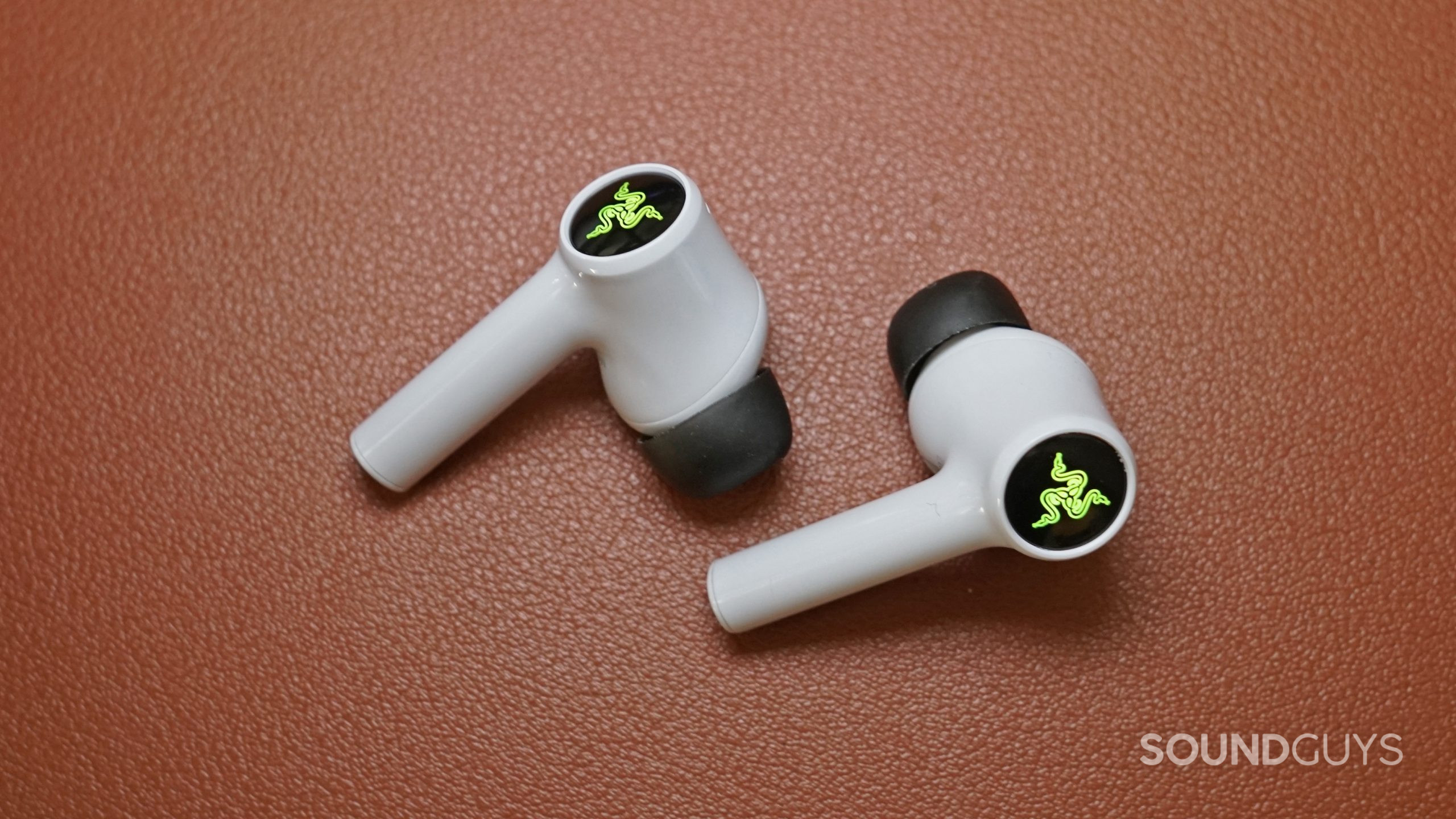
If you’ve seen the last couple Razer Hammerhead products, this will probably seem familiar. The Razer Hammerhead Hyperspeed looks just like the second generation of Razer Hammerhead true wireless earbuds, only now it comes in white and includes an additional USB-C wireless dongle. The earbuds themselves feature a fairly standard stemmed design, with silicone ear tips and touch sensitive panels.
These plastic earbuds feature a rounded design that rests in your outer ear, making for a very comfortable and stable fit. The stems are long, which means wearing a mask can interfere a little, but also that adjusting the fit is easy. I have no trouble wearing the earbuds for more than two hours, and during gym sessions—especially given its IPX4 rating.

Using the Razer Hammerhead Hyperspeed is straightforward, and pretty much a bog-standard true wireless experience. However, the inclusion of the USB-C wireless dongle opens up gaming compatibility very nicely. It doesn’t work any differently to products like the EPOS GTW 270 Hybrid, HyperX Cloud Mix Buds, or Logitech G Fits, but it’s reliable. The Hammerhead Hyperspeed doesn’t allow simultaneous audio from its two connection methods, but switching back and forth is easy too.
How do you control the Razer Hammerhead Hyperspeed?
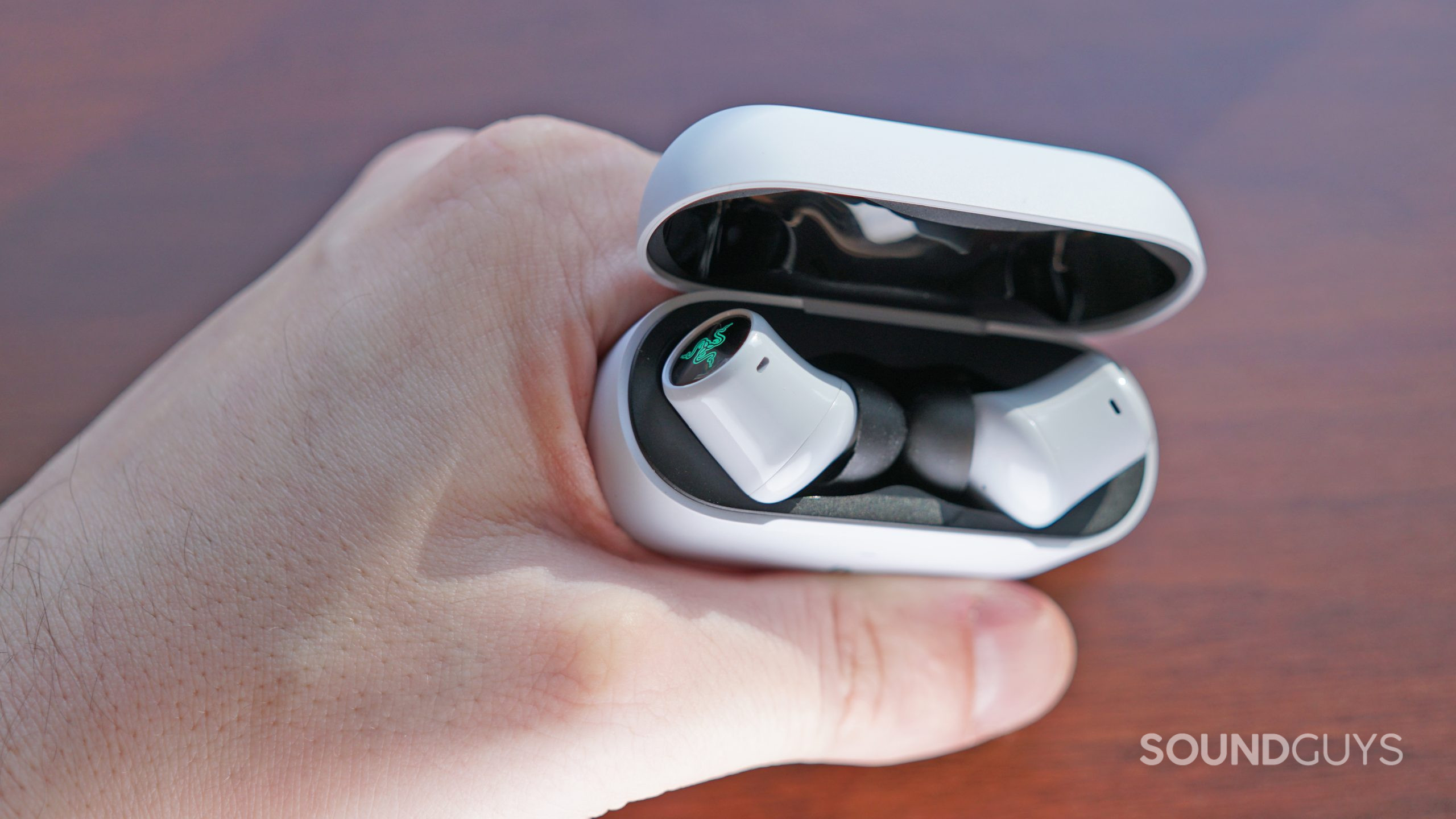
The Razer Hammerhead Hyperspeed features the standard array of tap controls, but there are a few additional things to keep track of. Here are the default settings:
| Action | Function |
|---|---|
Single tap | Play/Pause music |
Double tap | Skip forward |
Triple tap | Bluetooth/Hyperspeed connection toggle |
Tap and hold | ANC/Transparency toggle |
Double Tap and hold | Volume up (Right), Volume down (Left) |
Triple Tap and hold | Game mode |
Should you use the Razer Audio App for the Razer Hammerhead Hyperspeed?
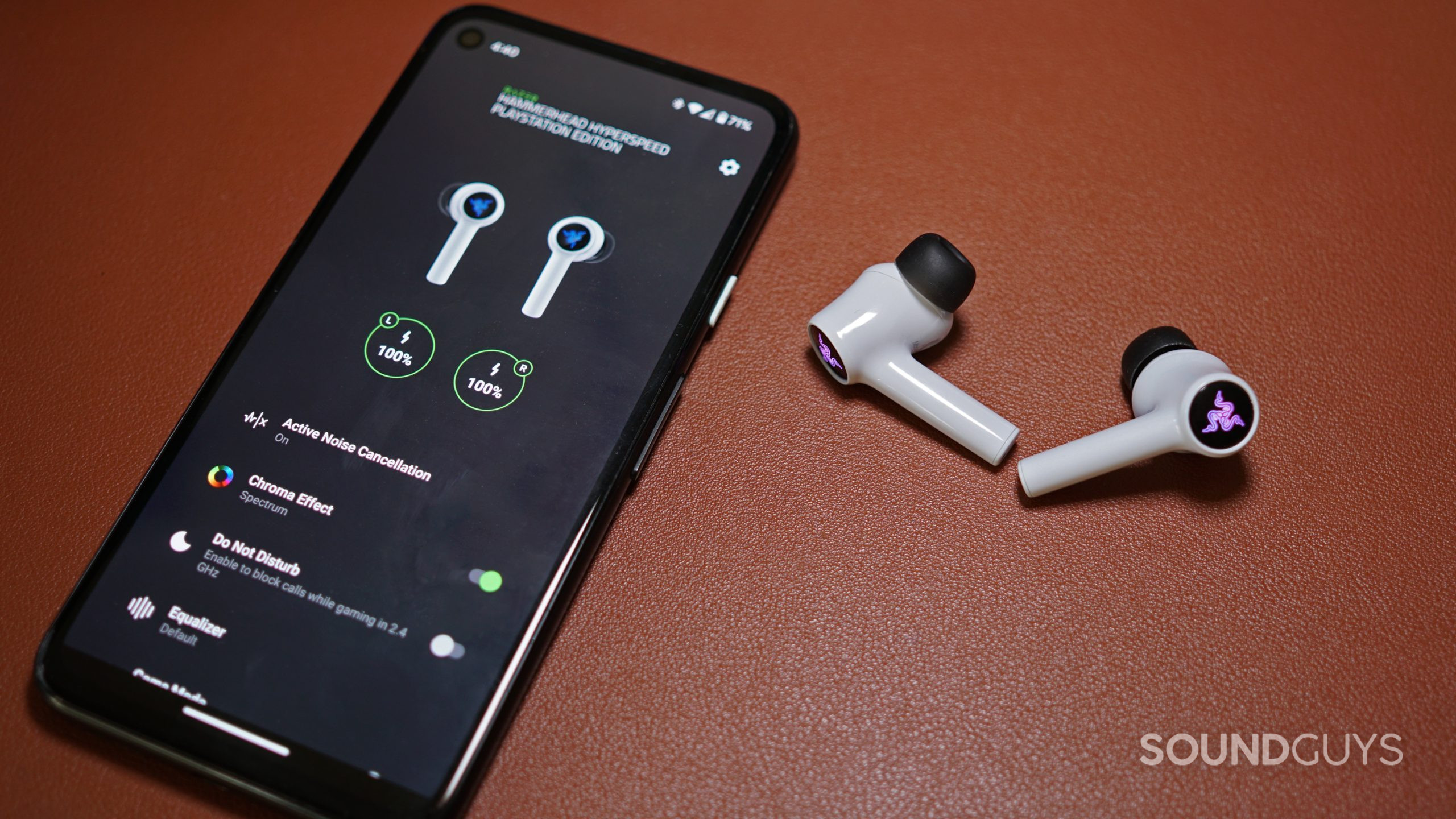
If you want to customize the controls of the Razer Hammerhead Hyperspeed, turn off its LEDs to preserve battery life, or update its firmware, you should install the Razer Audio companion app. Razer Audio is easy to use, and brings all the features I just mentioned, as well as the ability to EQ the earbuds, turn on a Do Not Disturb mode while connected with the USB-C dongle (phone calls don’t interrupt your gaming), and a low latency game mode.
The app itself is very straightforward, and virtually all the settings are located on one page. If you don’t like having these kinds of apps installed on your phone, you can always uninstall after you’ve changed the EQ or turned off the LEDs, too.
How do you connect the Razer Hammerhead Hyperspeed?
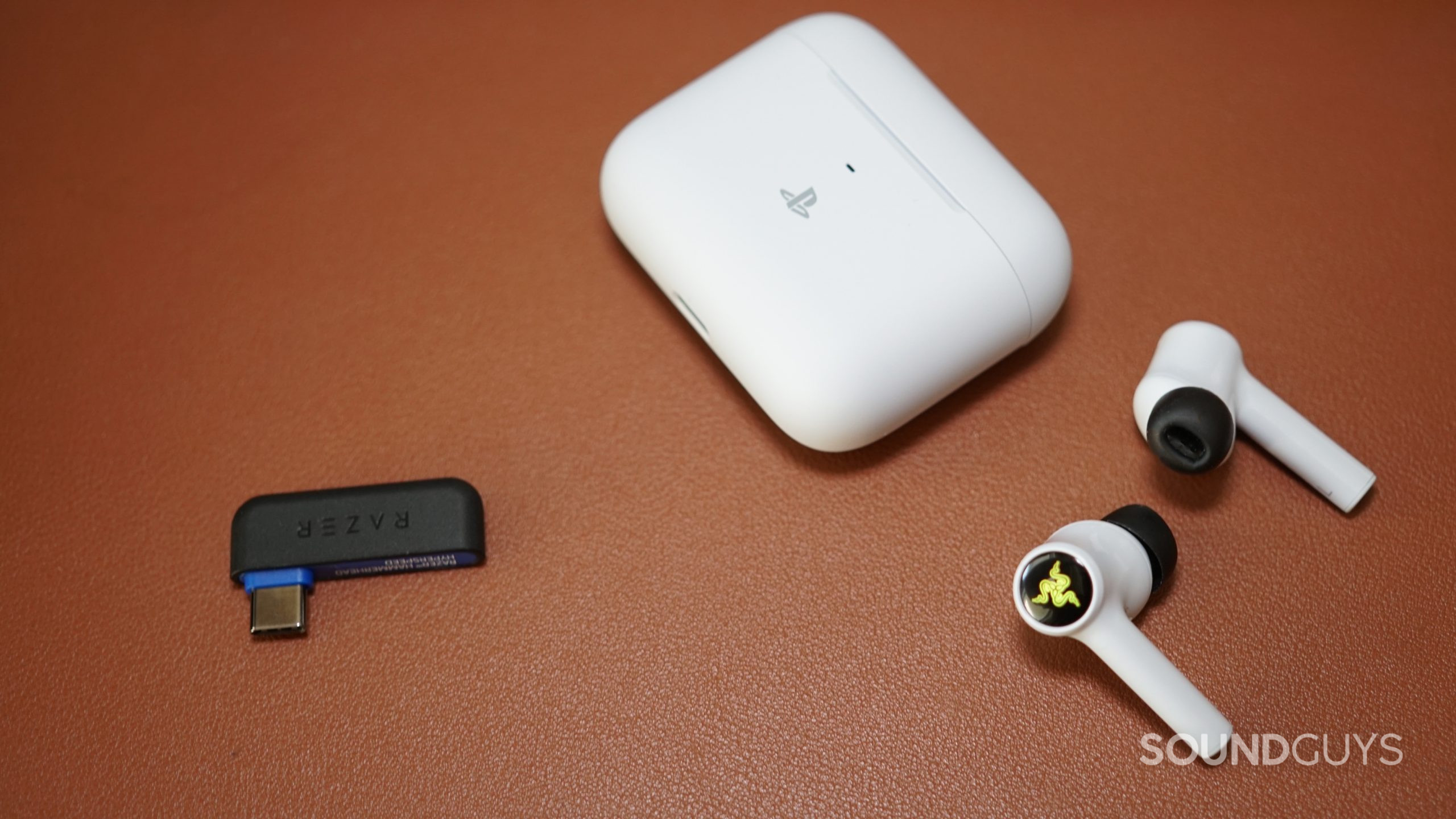
The Razer Hammerhead Hyperspeed uses two methods for connecting to your device. Like all true wireless earbuds, this uses Bluetooth, but it also includes a USB-C dongle for gaming. The earbuds use Bluetooth 5.2, with support for the AAC and SBC codecs, which is basically the standard these days. The USB-C dongle uses a 2.4GHz RF connection, which has virtually no latency, so it’s much better suited for gaming.
This level of connectivity falls well in line with similar gaming earbuds on the market. However, it’s worth pointing out that the Razer Hammerhead Hyperspeed doesn’t include a USB-A adapter for its dongle, which is a very common addition—if your desktop tower doesn’t have any USB-C ports, you’re going to need to find one somewhere.
Bluetooth Pairing with the Razer Hammerhead Hyperspeed is very straightforward. Here’s what to do:
- Open the Hammerhead Hyperspeed, leaving the earbuds in the charging case.
- Find the Razer Hammerhead Hyperspeed in your device’s Bluetooth menu.
- Pair with the earbuds.
How long does the Razer Hammerhead Hyperspeed’s battery last?
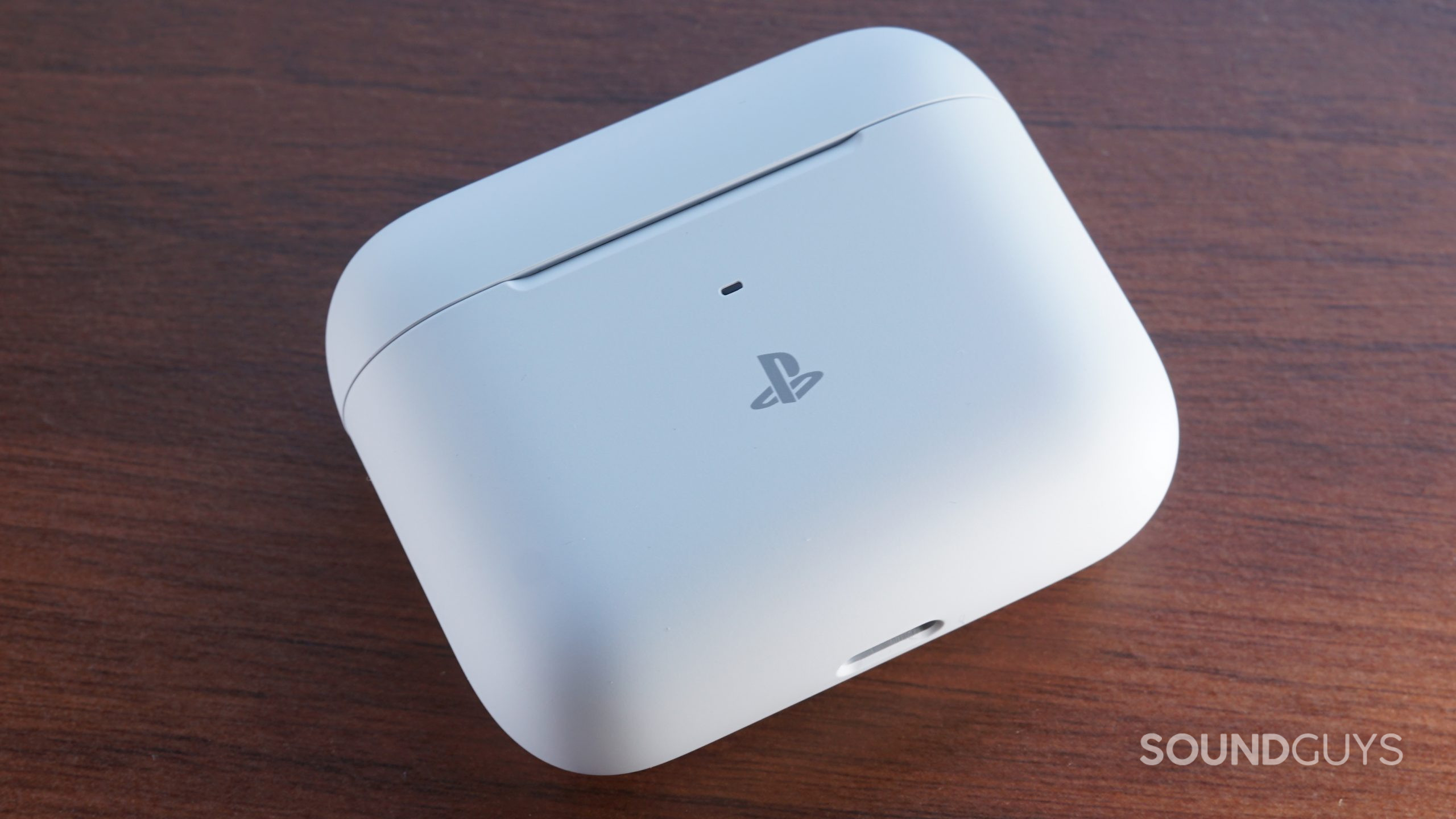
There are two main factors for determining the battery life of the Razer Hammerhead Hyperspeed: active noise canceling (ANC) and the earbuds’ Chroma LED lighting effects. If you’ve got both on, the company claims you’ll only achieve 4 hours of playback on a single charge, with an additional 16 hours from the charging case. If both are off, you can expect closer to 6.5 hours on a single charge, with 26 hours stored in the case. Basically, you’re in for either very average or below average single-charge performance, and enough juice for four full charge cycles in the case. I cycled through the different variations of settings periodically throughout my review, and perhaps predictably, my experiences fall somewhere in between those two targets. Our battery testing is ongoing, so we’ll update when we’ve got a firmer result to go on.
No. It takes 3 hours to charge the Razer Hammerhead Hyperspeed charging case, via its USB-C port. There’s no quick charge, nor is there wireless charging.
How well does the Razer Hammerhead Hyperspeed attenuate noise?
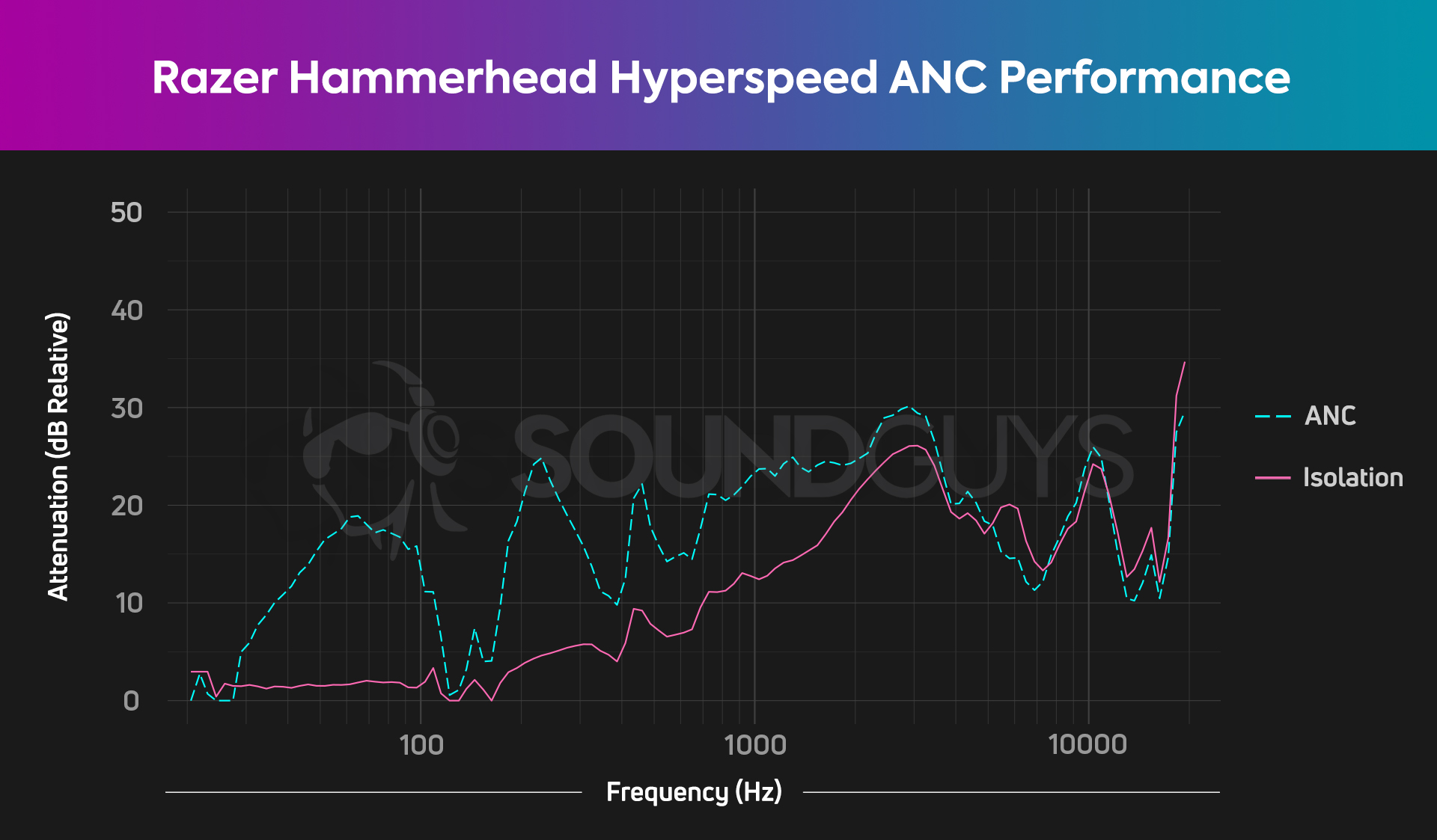
The Razer Hammerhead Hyperspeed does a decent enough job attenuating outside noise with its ANC feature. Passive isolation performance is definitely less than stellar, though. Performance like this means that low-end environmental noise, like the rumble of a bus or the whir of a refrigerator, should be substantially quieted when ANC is active, but you’re not going to get much help with high end incidental noises. Sounds like the clatter of dish ware or an ambulance siren will come through—not always a bad thing, just don’t expect to be siloed off in your own world all the time.
How does the Razer Hammerhead Hyperspeed sound?
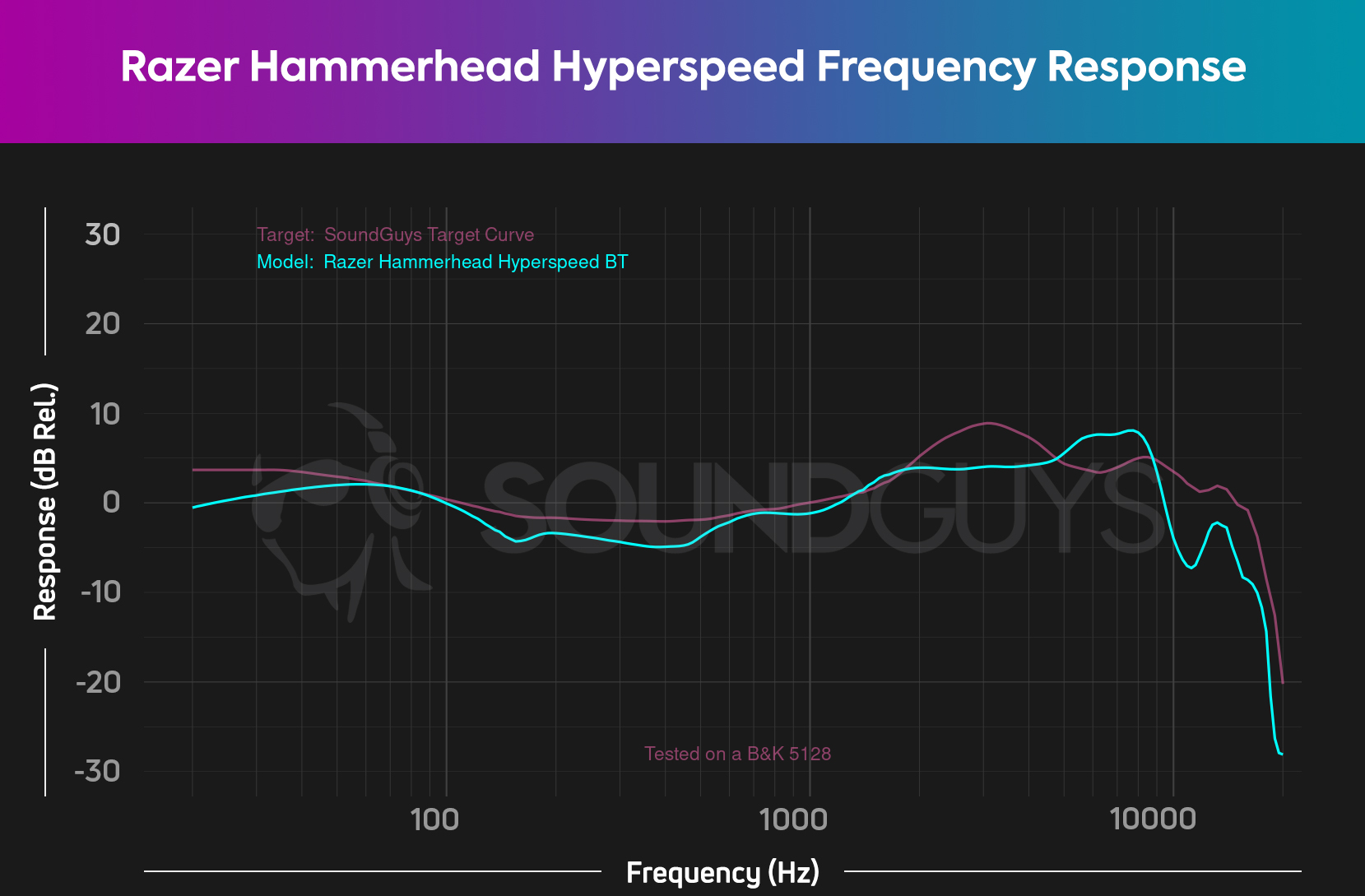
The Razer Hammerhead Hyperspeed outputs sound that’s very close to our in-house target curve in terms of frequency response, until you get to the high range. There’s a little under-emphasis in sub bass and midrange sound, but no more than 5dB of difference from our ideal. Things start deviating around 2kHz, where we don’t see the ear gain we usually expect to get a natural representation of sound compared to normal listening.
A frequency response like this means most music will sound fine coming out of the Hammerhead Hyperspeed, but slightly lacking where speech intelligibility is concerned. Listening to something like Let’s Do It by All Talk, the backing vocals sound very quiet compared to the bass and synth parts of the song, and the lead vocals definitely become a little indistinct as the mix gets busier.
Playing games, this is a pretty capable pair of earbuds. Audio visual lag isn’t an issue using, and earbuds work well with the 3D sound feature of the PlayStation 5. Playing Elden Ring, the environmental sounds of running through Liurnia come through with a nice degree of directionality, whether it’s the sound of a giant crayfish waking up or a bell announcing the far-off presence of a Revenant—it’s not hard to tell what where a sound is coming from.
How good is the Razer Hammerhead Hyperspeed’s microphone?
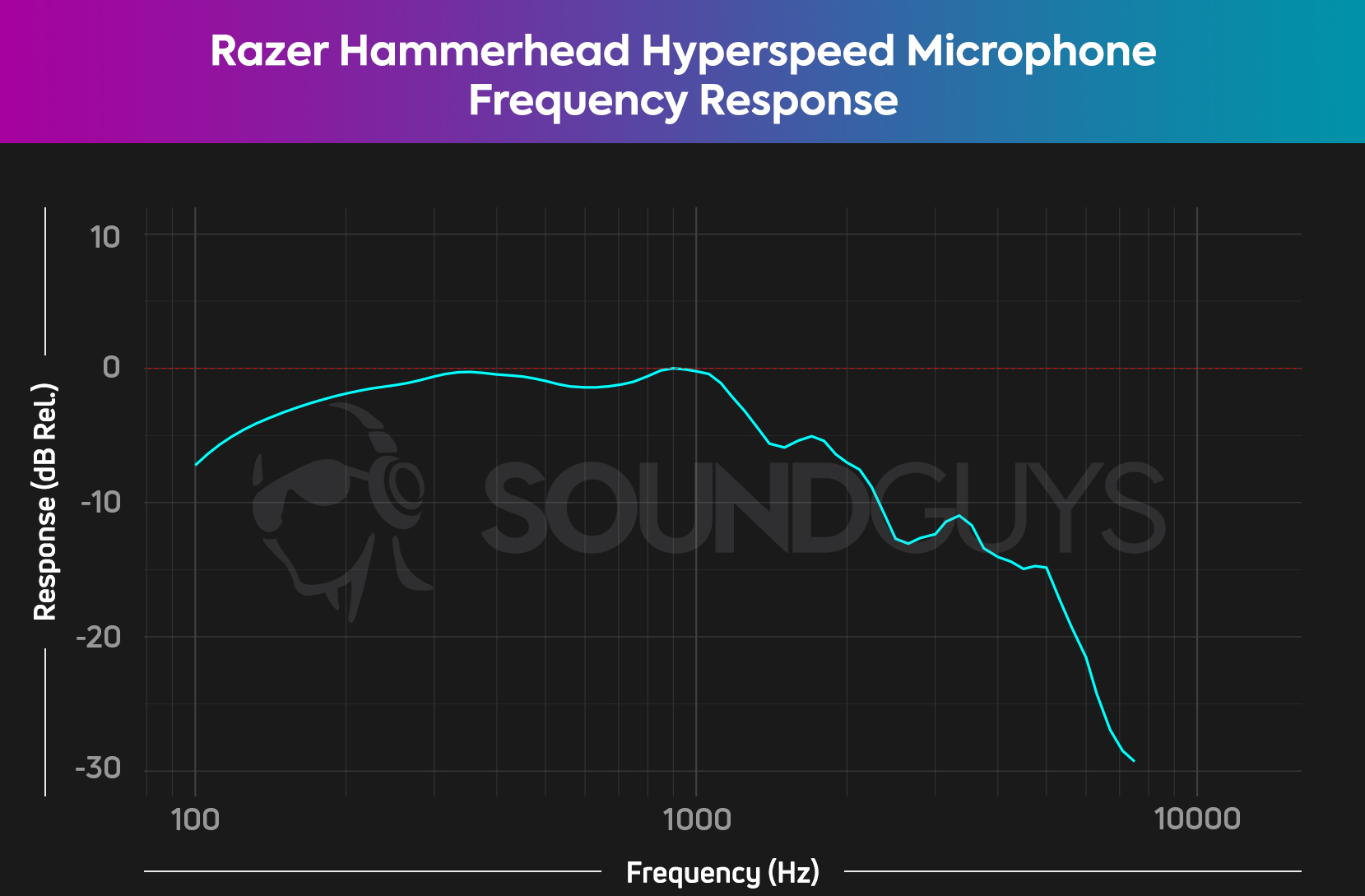
The Razer Hammerhead Hyperspeed has a decent microphone for a pair of true wireless earbuds. Whether you’re connected using Bluetooth or the USB dongle, the microphone is fairly clear and pretty loud. There isn’t much of the typical muffling of sound you run into with most true wireless earbud microphones, so this will work well for voice chat or phone calls. This does a poor job of rejecting environmental sounds, so you may run into issues talking in loud environments, but otherwise it’ll work well if you’re at home gaming.
Razer Hammerhead Hyperspeed microphone demo (Ideal conditions):
Razer Hammerhead Hyperspeed microphone demo (Office conditions):
Razer Hammerhead Hyperspeed microphone demo (Reverberant conditions):
How does the microphone sound to you?
Razer Hammerhead Hyperspeed microphone demo (Ideal conditions):
Razer Hammerhead Hyperspeed microphone demo (Office conditions):
Razer Hammerhead Hyperspeed microphone demo (Reverberant conditions):
Should you buy the Razer Hammerhead Hyperspeed?
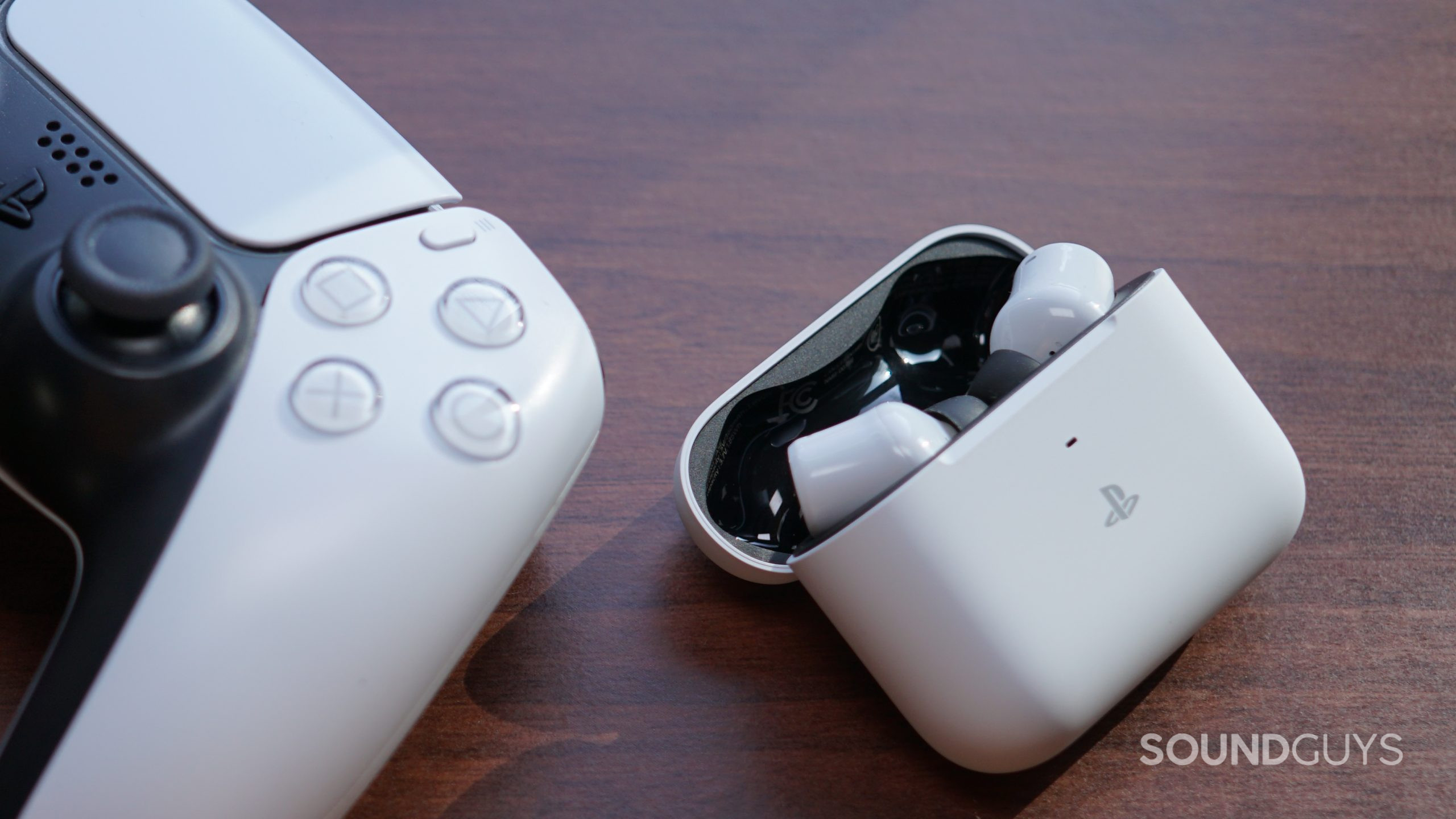
If you really want a pair of gaming earbuds for playing on your PlayStation 5, PC, and mobile device, the Razer Hammerhead Hyperspeed could be just the thing. The battery life isn’t spectacular, but it’s plenty for most gaming sessions. The ANC performance is more than adequate if you’re just trying to cut out the noises of the home. The sound is decent, and so is the microphone. The fact that it’s only $150 USD makes the deal that much more appealing.
This is by no means a perfect product, though a lot of the demerits are fairly minor. There’s not a lot of room for customizing the controls. It’s also too bad there aren’t any high quality codecs for Android users. This also represents a $20 USD markup from the Razer Hammerhead True Wireless, and the only thing you get is the USB-C dongle—if you’re only interested in mobile gaming, this could be a more prudent avenue to explore.
What should you get instead of the Razer Hammerhead Hyperspeed?
If you like the idea of having a pair of gaming earbuds, it’s still pretty hard to justify needing a pair of true wireless earbuds for it. Not having wires is nice, but at the end of the day, if you’re playing on a PlayStation 5 or a Steam Deck, the thing you’d be plugging into is always well within arm’s reach. To that end, it might be worth saving the $100 USD or more, and buying something like the JBL Quantum 50 or the Logitech G333—they both sound good, cost way less, and you’ll never have to worry about battery life or audio visual lag.
If you’re just after wireless gaming audio, and you don’t really care about the earbud form factor, there are plenty of better cheaper options. Wireless headsets like the Razer Barracuda X (2022) and Turtle Beach Stealth 600 MAX both beat the Hammerhead Hyperspeed battery life in spades—single charge and combined. They also sound good, they’re very comfortable, and cost less money.
Frequently asked questions about the Razer Hammerhead Hyperspeed
You can also get a black, Xbox-licensed Razer Hammerhead Hyperspeed. This model is also compatible with Xbox Wireless, but it lacks the USB-C dongle.
